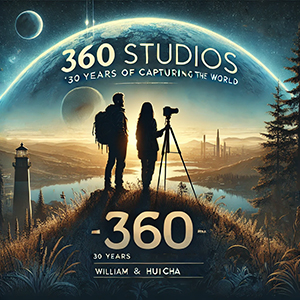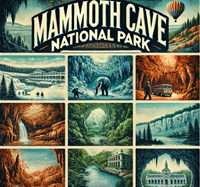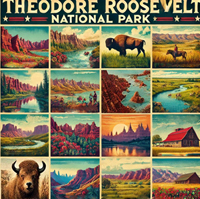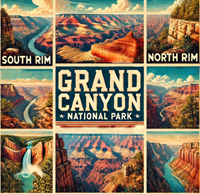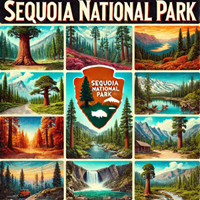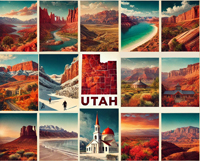

William and Hui Cha Stanek have meticulously crafted these national park guides, each showcasing the most stunning landscapes across the USA. But beyond the breathtaking scenery, these guides delve into the stories, experiences, and connections that make each park visit truly memorable.
National Parks Index | US Itineraries Index | American Roadtrips Index

Bring home a Bugville Critters book and watch as your child's love for reading and learning grows with every page. Hand-painted illustrations bring the heartwarming stories to life. Ask your librarian to add Bugville Critters to the library's digital collection today!
Discover William Stanek's Exclusive Art Collection
Explore and purchase the stunning art featured on this site. Own a piece of William Stanek's unique and captivating artwork today!
(January 27, 2025) Introducing Wrangell-St. Elias National Park and Preserve: Alaska's Vast Wilderness
Introduction to Wrangell-St. Elias National Park and Preserve
Wrangell-St. Elias National Park is a land of superlatives, where the vastness and grandeur of Alaska are on full display. The park, the largest in the United States, is a place where towering peaks, immense glaciers, and wild rivers create a landscape that feels untouched by time. My first visit to Wrangell-St. Elias was an adventure into the wilds of Alaska-- flying over the massive glaciers that stretch out for miles, I was struck by the scale and beauty of this remote wilderness. Hiking near the historic Kennecott Mines, with the towering Wrangell Mountains as a backdrop, gave me a sense of connection to both the natural world and the history of those who came here seeking fortune. Wrangell-St. Elias is a place of solitude and awe, where the raw power of nature is on full display, offering an experience that is both humbling and exhilarating.
How to Reach Wrangell-St. Elias National Park and Preserve
From the North (Fairbanks, AK): Travelers can drive south on Richardson Highway (AK-4) to Glennallen, then follow the Edgerton Highway (AK-10) east to Chitina and the park's western entrances. The distance is approximately 300 miles, with a travel time of around 6 hours.
From the South (Anchorage, AK): Visitors from Anchorage can take Glenn Highway (AK-1) east to Glennallen, then follow the Edgerton Highway (AK-10) east to Chitina and the park. This route covers about 200 miles and takes around 5 hours.
From the East (Juneau, AK): From Juneau, travelers can take a ferry to Whittier, then drive north on the Seward Highway (AK-1) to Anchorage and follow the route from Anchorage. This journey spans approximately 450 miles by ferry and road.
From the West (Cordova, AK): Travelers from Cordova can take a ferry to Valdez, then drive north on Richardson Highway (AK-4) to Glennallen and follow the route from Fairbanks. This route covers approximately 200 miles by ferry and road.
Exploring Wrangell-St. Elias: Must-Visit Sites
- Mount Wrangell: One of the largest active volcanoes in North America, offering challenging climbs and stunning views.
- Root Glacier: Accessible from the town of McCarthy, providing opportunities for glacier hiking and ice climbing.
- Kennecott Mines: A historic mining site offering guided tours and a glimpse into the area's industrial past.
- Nabesna Road: A scenic drive providing access to remote areas of the park and opportunities for wildlife viewing.
Seasonal Variations
Wrangell-St. Elias offers vast beauty throughout the year:
- Spring: Melting snow and ice create opportunities for wildlife viewing and early season hiking.
- Summer: Long daylight hours and milder temperatures make for ideal conditions for exploration and mountaineering.
- Fall: Brilliant fall colors enhance the park's rugged landscapes.
- Winter: Extreme cold and heavy snow provide a stark and beautiful landscape, ideal for those seeking solitude and winter sports.
Visitor Updates for Wrangell-St. Elias National Park
Conservation Efforts
William Stanek's photography in Wrangell-St. Elias emphasizes the park's vast and pristine wilderness. His work supports efforts to protect the park's glaciers, wildlife, and ecosystems from the impacts of climate change and human activity, advocating for the preservation of this remote and rugged landscape.
1 Day at Wrangell-St. Elias National Park and Preserve: Alaska's Untamed Wilderness
Introduction
Wrangell-St. Elias National Park and Preserve, located in southeastern Alaska, is known for its massive glaciers, towering peaks, and remote wilderness. Here's a detailed guide to making the most of your visit, with expert tips from William and Hui Cha Stanek.
Morning: Arrival and Glacier Exploration
7:00 AM - Breakfast in McCarthy
- Overview: Start your day with a hearty breakfast in the nearby town of McCarthy.
- Tips from William: Capture the morning light on the town's historic buildings.
- Insights from Hui Cha: Enjoy a nutritious breakfast to fuel your day. Pick up some snacks and water for later.
8:00 AM - Flightseeing Tour
- Overview: Take a flightseeing tour to get a bird's-eye view of the park's glaciers, peaks, and valleys.
- Tips from William: Use a telephoto lens to capture aerial views of the rugged landscape. The flight provides stunning perspectives.
- Insights from Hui Cha: Dress warmly and bring a camera. The flight is an adventure in itself, offering breathtaking views.
Mid-Morning: Glacier Hiking
9:30 AM - Root Glacier
- Overview: Hike to Root Glacier, one of the park's accessible glaciers.
- Tips from William: Use a wide-angle lens to capture the expansive views of the glacier. The morning light is perfect for photography.
- Insights from Hui Cha: Wear sturdy shoes and bring plenty of water. The hike can be strenuous but offers rewarding views.
11:00 AM - Ice Climbing on Root Glacier
- Overview: Try ice climbing on Root Glacier with a guided tour.
- Tips from William: Use a GoPro or another action camera to capture your climb. The afternoon light enhances the textures of the ice.
- Insights from Hui Cha: Ensure you have the proper gear and experience for ice climbing. If not, consider hiring a guide. Safety is paramount.
Afternoon: River Exploration and Wildlife Viewing
12:30 PM - Picnic Lunch by Kennicott River
- Overview: Enjoy a packed lunch by the Kennicott River, with stunning views of the surrounding wilderness.
- Tips from William: Capture candid moments of your picnic with the beautiful river backdrop.
- Insights from Hui Cha: Pack a nutritious and energizing meal. Take a moment to relax and enjoy the natural surroundings.
1:30 PM - Kennicott Ghost Town
- Overview: Explore the historic Kennicott Ghost Town, a former mining town.
- Tips from William: Use a wide-angle lens to capture the historic buildings and surrounding scenery. The afternoon light enhances the colors and textures.
- Insights from Hui Cha: The town offers a fascinating glimpse into the past. Take your time exploring the buildings and learning about the history.
3:00 PM - McCarthy Road
- Overview: Drive the McCarthy Road, a scenic route that offers views of the park and surrounding wilderness.
- Tips from William: Use a telephoto lens to capture distant peaks and valleys. Late afternoon light is ideal for photography.
- Insights from Hui Cha: The road can be rough, so drive carefully. Enjoy the scenic views and stop at overlooks for photo opportunities.
Late Afternoon: Photography and Relaxation
4:30 PM - Bonanza Mine
- Overview: Hike to Bonanza Mine for more spectacular views of the park.
- Tips from William: Use a wide-angle lens to capture the dramatic cliffs and the historic mine. Experiment with different compositions and perspectives.
- Insights from Hui Cha: The hike is challenging but offers incredible views. Bring water and take breaks as needed.
Evening: Sunset and Dinner
6:00 PM - Sunset at McCarthy Road Overlook
- Overview: Head to an overlook on McCarthy Road for a stunning sunset view over the park.
- Tips from William: Use a graduated neutral density filter to balance the exposure. Experiment with long exposures to capture the changing light.
- Insights from Hui Cha: Arrive early to find a good spot. Bring a light jacket as it can get cool after sunset.
7:30 PM - Dinner in McCarthy
- Overview: Return to McCarthy for a relaxing dinner at a local restaurant.
- Tips from William: Capture the evening atmosphere of the small town. Try some local Alaskan cuisine to end your day.
- Insights from Hui Cha: Reflect on the day's adventures and enjoy a hearty meal. McCarthy offers a variety of dining options with a rustic charm.
Wrangell-St. Elias National Park and Preserve (Alaska)
Wrangell-St. Elias National Park and Preserve, located in southeastern Alaska, is the largest national park in the United States, covering over 13 million acres. The park is home to some of the tallest peaks in North America, vast glaciers, and diverse wildlife, offering a remote and rugged wilderness experience for adventurers and photographers.
Park History and Cultural Significance:
- Established as a national park and preserve in 1980, Wrangell-St. Elias protects a diverse range of ecosystems and cultural sites.
- The area has been inhabited by Native Alaskan tribes, particularly the Ahtna and Eyak, for thousands of years. The park also preserves sites related to early European explorers and mining operations.
Visitor Centers and Facilities:
- Wrangell-St. Elias Visitor Center: Located in Copper Center, it offers exhibits on the park's natural and cultural history, a park film, maps, information, restrooms, and a gift shop.
- Kennecott Visitor Center: Provides information on the historic Kennecott Mines, exhibits, maps, and restrooms.
- Campgrounds: The park has several primitive campgrounds, including Kendesnii Campground, offering basic amenities like restrooms and picnic tables.
Best Times to Visit:
- Summer (June to September): The best time to visit with long daylight hours, moderate temperatures, and accessible trails and roads.
- Fall (October to November): Cooler temperatures and fewer crowds, but weather can be unpredictable.
- Winter (December to March): Offers solitude and opportunities for winter activities like snowshoeing and dog sledding, but temperatures can be extremely cold.
- Spring (April to May): Snow begins to melt, but access can be challenging due to muddy conditions and melting ice.
Activities and Recreation:
- Hiking and Backpacking: The park offers vast wilderness for backcountry hiking and exploration, with no designated trails.
- Glacier Viewing: Opportunities to view and explore numerous glaciers, including Root Glacier and Kennicott Glacier.
- Wildlife Watching: Opportunities to see grizzly bears, black bears, moose, caribou, and a variety of bird species.
- Fishing: The park's rivers and lakes offer excellent fishing opportunities, particularly for salmon and trout.
- Historic Tours: Explore the Kennecott Mines National Historic Landmark and learn about the area's mining history.
- Flightseeing: Scenic flights offer breathtaking views of the park's vast landscapes and glaciers.
Accessibility Information:
- The Wrangell-St. Elias Visitor Center in Copper Center is wheelchair accessible.
- Access to the park itself can be challenging for those with mobility issues due to the remote and rugged terrain.
- Accessible restrooms are available at the visitor center and some trailheads.
Permits and Regulations:
- Entrance Fees: There is no entrance fee for Wrangell-St. Elias National Park and Preserve.
- Camping Permits: Not required for backcountry camping, but visitors are encouraged to register their trip.
- Backcountry Permits: Not required, but it is recommended to register your trip at the visitor center.
- Special Use Permits: Needed for activities such as commercial filming and large group gatherings.
Nearby: Chugach National Forest, Tongass National Forest
-
Chugach National Forest: About two hours from Wrangell-St. Elias, this forest offers a variety of outdoor activities and diverse landscapes.
- Activities: Hiking, fishing, camping, wildlife viewing.
- Notable Sites: Portage Glacier, Spencer Glacier.
- Wildlife: Black bears, mountain goats, various bird species.
-
Tongass National Forest: The largest national forest in the U.S., located about two hours from Wrangell-St. Elias, it offers diverse landscapes, wildlife, and recreational opportunities.
- Activities: Hiking, fishing, wildlife viewing.
- Notable Sites: Mendenhall Glacier, Misty Fiords National Monument.
- Wildlife: Bald eagles, black bears, Sitka black-tailed deer.
Important Updates for Wrangell-St. Elias National Park
Wrangell-St. Elias National Park and Preserve (Alaska)
Wrangell-St. Elias National Park and Preserve, located in south-central Alaska, is the largest national park in the United States, encompassing over 13 million acres of rugged wilderness. This park is known for its towering mountains, vast glaciers, and rich wildlife. Renowned photographers William and Hui Cha Stanek have captured the park's breathtaking beauty through their lenses. This guide explores local attractions, nearby towns and cities, scenic drives, and the best hikes in and around Wrangell-St. Elias National Park, enriched by the Staneks' expertise and experiences.
The nearby town of McCarthy serves as a primary gateway to the park, providing basic amenities including lodging, dining, and transportation. McCarthy is home to the Wrangell-St. Elias Visitor Center, which offers exhibits and information about the park's natural and cultural history.
Further afield, the town of Chitina provides additional amenities and serves as another gateway to the park. Chitina is located at the end of the Edgerton Highway and offers access to the historic Kennecott Mines National Historic Landmark, which provides a fascinating glimpse into the region's mining history.
Wrangell-St. Elias offers vast wilderness requiring extensive preparation.
- Weather: Conditions can change rapidly, with extreme cold, rain, and snow common even in summer. Be prepared for all scenarios.
- Wildlife: Bears and other wildlife are common. Carry bear spray, store food properly, and follow all safety guidelines.
- Navigation: No marked trails in many areas. Proficiency with maps, compasses, and GPS is essential.
- Terrain: Rugged and remote. Be prepared for glacier travel, river crossings, and difficult terrain.
- Permits: Required for backcountry travel and camping. Attend a backcountry orientation.
Local Attractions and Surrounding Areas
Wrangell-St. Elias National Park is surrounded by numerous attractions that enhance the visitor experience. Here are some must-see local attractions:
- Kennicott and McCarthy: Historic mining towns located in the heart of the park. Kennicott offers guided tours of the abandoned copper mill, while McCarthy provides a charming base for exploring the area.
- Root Glacier: Accessible from Kennicott, this glacier offers opportunities for guided glacier hikes and ice climbing.
- Wrangell Mountain Air: Provides flightseeing tours, offering breathtaking aerial views of the park's glaciers and mountains.
- Wrangell-St. Elias Visitor Center: Located near Copper Center, this visitor center provides exhibits, park information, and stunning views of the Wrangell Mountains.
- Nabesna Road: Offers access to the northern part of the park, with opportunities for hiking, wildlife viewing, and exploring historic sites.
- Yakutat: A coastal community offering access to the park's remote western regions, known for its fishing, surfing, and glacier tours.
Nearby Towns and Cities
Visitors to Wrangell-St. Elias National Park can find additional amenities and activities in nearby towns and cities:
- Copper Center, Alaska: The closest town to the park's main visitor center, offering accommodations, dining options, and attractions such as the Copper Center Museum.
- Glennallen, Alaska: Located at the junction of the Glenn and Richardson Highways, Glennallen offers accommodations, dining, and services for travelers.
- Valdez, Alaska: A coastal town offering extensive amenities, including hotels, restaurants, shopping, and attractions such as the Valdez Museum and the Columbia Glacier.
- Anchorage, Alaska: About 250 miles west of the park, Anchorage offers a wide range of amenities, including hotels, restaurants, shopping, and attractions such as the Alaska Native Heritage Center and the Anchorage Museum.
- Fairbanks, Alaska: Located about 300 miles north of the park, Fairbanks offers extensive amenities, including hotels, restaurants, shopping, and attractions such as the University of Alaska Museum of the North and the Fairbanks Ice Museum.
Scenic Drives
Wrangell-St. Elias National Park offers several scenic drives that provide beautiful views of the park's landscapes. These drives are perfect for capturing the essence of the park through photography.
-
McCarthy Road:
- Details: This 60-mile gravel road runs from Chitina to the historic town of McCarthy, offering stunning views of the Chitina River, mountain ranges, and opportunities to spot wildlife.
- Key Stops: Highlights include the Kuskulana River Bridge, Gilahina Trestle, and views of the Wrangell Mountains.
- Photography Tips: William Stanek suggests stopping at the various pull-offs to capture the panoramic views of the mountains and river. Early morning and late afternoon provide the best lighting for photography.
-
Nabesna Road:
- Details: This 42-mile gravel road offers access to the park's northern regions, with opportunities for hiking, wildlife viewing, and exploring historic sites.
- Key Stops: Highlights include the Nabesna Gold Mine, Jack Creek, and views of the Wrangell Mountains.
- Photography Tips: Hui Cha Stanek recommends using a wide-angle lens to capture the expansive views of the mountains and a telephoto lens for wildlife. The best times for photography are during the golden hours of sunrise and sunset.
-
Richardson Highway (Glennallen to Valdez):
- Details: This scenic highway runs south from Glennallen to Valdez, offering stunning views of the Chugach Mountains, Worthington Glacier, and Thompson Pass.
- Key Stops: Highlights include the Worthington Glacier, Thompson Pass, and the Keystone Canyon waterfalls.
- Photography Tips: The Staneks suggest using a wide-angle lens to capture the dramatic landscapes and a polarizing filter to enhance colors. Early morning and late afternoon provide the best light for photography.
-
Glenn Highway (Anchorage to Glennallen):
- Details: This scenic highway runs east from Anchorage to Glennallen, offering beautiful views of the Matanuska Valley, Matanuska Glacier, and the Chugach Mountains.
- Key Stops: Highlights include the Matanuska Glacier, Sheep Mountain, and views of the Wrangell Mountains from the Glenn Highway.
- Photography Tips: William Stanek recommends using a wide-angle lens to capture the expansive mountain views and a polarizing filter to enhance colors. Early morning and late afternoon provide the best light for photography.
Other Scenic Drives:
-
Edgerton Highway: This 33-mile scenic drive takes visitors from the town of Chitina to the Richardson Highway, offering beautiful views of the surrounding mountains, forests, and rivers. The road provides access to several recreational areas and viewpoints. Key stops along the drive include the Copper River, the Liberty Falls, and the views of the Wrangell Mountains. Hui Cha highlights this drive for its serene beauty and the chance to explore the park's diverse landscapes.
Reservations and Timed Entry Information
Click the link to see updates. Wait up to 30 seconds for results.
Best Hikes
Wrangell-St. Elias National Park offers a variety of hiking trails that cater to all skill levels. Each trail provides unique opportunities for exploration and photography. Here are some of the best hikes in the park for prepared hikers:
-
Root Glacier Trail:
- Details: This 4-mile round-trip trail offers a moderately easy hike from Kennicott to the Root Glacier, with options for guided glacier hikes.
- Key Viewpoints: Highlights include views of the Root Glacier, the surrounding mountains, and the historic mining structures in Kennicott.
- Photography Tips: William Stanek recommends using a wide-angle lens to capture the glacier and mountain views and a macro lens for close-ups of the ice formations. Early morning and late afternoon provide the best light for photography.
-
Bonanza Mine Trail:
- Details: This 9-mile round-trip trail offers a challenging hike from Kennicott to the Bonanza Mine, with steep climbs and stunning views.
- Key Viewpoints: Highlights include the views of the Kennicott Glacier, the historic Bonanza Mine, and the surrounding mountains.
- Photography Tips: Hui Cha Stanek suggests using a wide-angle lens to capture the expansive views from the mine and a telephoto lens for distant landscapes. The best times for photography are during the golden hours of sunrise and sunset.
-
McCarthy-Kennicott Road:
- Details: This 5-mile one-way trail follows the old road between McCarthy and Kennicott, offering a moderately easy hike with historical and scenic interest.
- Key Viewpoints: Highlights include the views of the Kennicott River, the historic railroad structures, and the surrounding mountains.
- Photography Tips: The Staneks recommend using a wide-angle lens for capturing the historic structures and landscape views and a macro lens for details of the flora along the trail. Early morning and late afternoon provide the best light for photography.
-
Caribou Creek Trail:
- Details: This 7-mile round-trip trail offers a moderately strenuous hike through forested terrain to a high viewpoint overlooking the valley.
- Key Viewpoints: Highlights include views of Caribou Creek, the Chitina Valley, and the surrounding mountains.
- Photography Tips: William Stanek suggests using a wide-angle lens to capture the expansive views of the valley and a telephoto lens for wildlife. Early morning and late afternoon provide the best light for photography.
-
Skolai Pass Trail:
- Details: This 7-mile one-way trail offers a challenging hike through remote wilderness, leading to Skolai Pass with stunning views of glaciers and mountains.
- Key Viewpoints: Highlights include views of the Skolai Valley, the surrounding glaciers, and the Wrangell Mountains.
- Photography Tips: Hui Cha Stanek recommends using a wide-angle lens for capturing the expansive mountain views and a polarizing filter to enhance colors. The best times for photography are during the golden hours of sunrise and sunset.
-
Tebay Lakes Trail:
- Details: This 8-mile one-way trail offers a strenuous hike to the remote Tebay Lakes, with opportunities for fishing and backcountry camping.
- Key Viewpoints: Highlights include views of the Tebay Lakes, the surrounding mountains, and opportunities for wildlife viewing.
- Photography Tips: The Staneks suggest using a wide-angle lens to capture the views of the lakes and a telephoto lens for wildlife. Early morning and late afternoon provide the best light for photography.
-
Nabesna Road Trails:
- Details: There are several trails accessible from Nabesna Road, including the Skookum Volcano Trail and the Rambler Mine Trail, offering diverse hiking opportunities.
- Key Viewpoints: Highlights include views of the Nabesna Glacier, historic mine sites, and the surrounding wilderness.
- Photography Tips: William Stanek recommends using a wide-angle lens for capturing the diverse landscapes and a macro lens for details of the historic sites. Early morning and late afternoon provide the best light for photography.
Other Hikes:
-
Erie Mine Trail: This 8-mile round trip hike is moderately difficult and takes hikers to the historic Erie Mine, offering beautiful views of the surrounding mountains, valleys, and old mining structures. The trail features steep climbs, rugged terrain, and stunning vistas. Key points of interest along the trail include the Erie Mine, the Root Glacier, and the views of the Wrangell Mountains. William highlights this hike for its historical significance and the opportunity to explore the park's rich mining heritage.
-
Stairway Icefall Trail: This challenging 12-mile round trip hike takes hikers to the stunning Stairway Icefall, offering breathtaking views of the icefall, the surrounding peaks, and the lush meadows. The trail features steep climbs, rugged terrain, and beautiful vistas. Key points of interest along the trail include the Jumbo Creek, the Stairway Icefall, and the views of the Root Glacier. Hui Cha recommends this hike for experienced hikers looking for a challenging adventure and stunning views.
-
Skolai Pass Trail: This 14-mile round trip hike is moderately difficult and takes hikers to the scenic Skolai Pass, offering panoramic views of the surrounding peaks, glaciers, and valleys. The trail features diverse vegetation, lush meadows, and stunning vistas. Key points of interest along the trail include the Skolai Pass, the Russell Glacier, and the views of the Wrangell Mountains. William suggests this hike for its scenic beauty and the opportunity to explore the park's diverse landscapes.
-
Donaho Lakes Trail: This 6-mile round trip hike is moderately easy and takes hikers to the picturesque Donaho Lakes, offering beautiful views of the lakes, the surrounding forest, and the mountains. The trail features diverse vegetation, lush meadows, and stunning vistas. Key points of interest along the trail include the Donaho Lakes and the views of the Wrangell Mountains. William recommends this hike for its serene beauty and the opportunity to see the park's pristine alpine lakes.
In Wrangell-St. Elias National Park and Preserve, most of the backcountry is unmarked, and the few established trails are limited to visitor centers and more accessible areas. Here's what you need to know:
Trail Marking and Navigation
- Marked Trails: There are a few marked and maintained trails, primarily near visitor centers and more accessible areas. Examples include the Root Glacier Trail near Kennecott and the Skookum Volcano Trail off Nabesna Road.
- Backcountry: The vast majority of the park is trail-less wilderness. Hikers must navigate using natural landmarks, maps, compasses, and GPS devices.
Backcountry Hiking: Navigating in Wrangell-St. Elias National Park and Preserve Wrangell-St. Elias National Park offers extensive opportunities for backcountry hiking and exploration. Given the park's remote nature, many areas do not have established trails. Hikers must rely on navigation tools such as maps, compasses, and GPS devices to find and follow their intended routes. Here's how to navigate and explore the park safely:
Pre-Trip Planning
- Research and Maps: Thoroughly research your route before heading out. Obtain detailed topographic maps and GPS coordinates from the National Park Service (NPS) or other reputable sources.
- Weather and Conditions: Check the weather forecast and understand the seasonal conditions. Weather in Alaska can change rapidly, impacting travel and visibility.
- Permits and Regulations: Ensure that all necessary permits are obtained and familiarize yourself with park regulations and safety guidelines.
Navigation Tools
- Map and Compass: Carry a topographic map and a reliable compass. Be proficient in orienteering skills to navigate the vast, trail-less wilderness.
- GPS Device: While a GPS device is helpful, do not rely on it solely. Batteries can die, and signals can be lost, so always have backup navigation methods.
- Satellite Phone or Personal Locator Beacon (PLB): Due to the park's remoteness, carrying a satellite phone or PLB for emergency communication is advisable.
Landmarks and Natural Features
- Landmarks: Use natural landmarks such as glaciers, mountains, and rivers to navigate. Notable landmarks include Mount St. Elias, Malaspina Glacier, and the Wrangell Mountains.
- Geographical Features: Pay attention to geographical features and use them for navigation, especially in areas with fewer distinct landmarks.
Safety and Preparation
- Travel in Groups: It is safer to hike in groups. Companions can provide help if something goes wrong.
- First Aid and Survival Gear: Carry a comprehensive first aid kit, survival gear, and enough food and water for the duration of the trip plus extra for emergencies.
- Bear Safety: Wrangell-St. Elias is home to a large population of bears. Carry bear spray, know how to use it, and follow all bear safety guidelines provided by the NPS.
- Leave a Trip Plan: Inform someone about your trip plan, including your intended route and expected return time. This is crucial for your safety in case of an emergency.
William and Hui Cha Stanek's extensive body of work at Wrangell-St. Elias National Park showcases their deep appreciation for its vast wilderness, towering mountains, and stunning glaciers. William's technical expertise with photographic equipment and Hui Cha's creative vision result in compelling images that highlight the park's unique features and diverse ecosystems. Their dedication often involves waiting for hours to capture the perfect light and conditions, revealing the park's essence in each shot.
Conservation is a core theme in their photography. Through their stunning visual storytelling, they aim to foster a greater awareness of the need to protect natural landscapes like Wrangell-St. Elias National Park. Their support for organizations such as the National Park Foundation and the Sierra Club underscores their commitment to environmental stewardship and responsible tourism.
Conclusion
Wrangell-St. Elias National Park, with its towering mountains, vast glaciers, and diverse wildlife, offers endless opportunities for exploration and photography. The park's local attractions, scenic drives, and hiking trails provide a comprehensive experience for visitors. Through the lens of William and Hui Cha Stanek, the park's natural wonders and significance are vividly captured, inspiring a deeper appreciation and commitment to preserving this unique national treasure. Whether you're a seasoned photographer or a casual explorer, Wrangell-St. Elias National Park promises a memorable and enriching adventure.
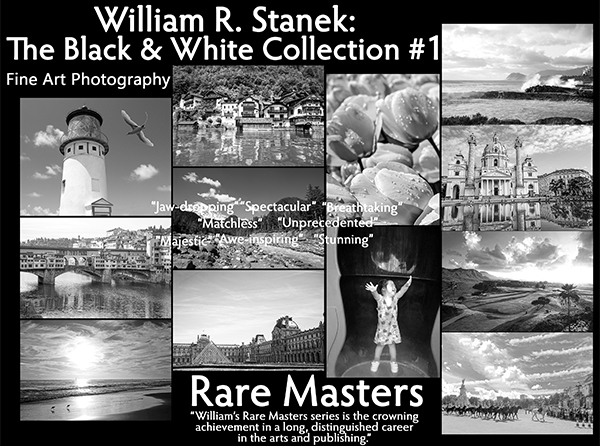
Step into a world of timeless beauty with our premium, oversized hardcover book - crafted for discerning collectors and anyone who values the power of art. Perfect for your coffee table, it's more than just a book; it's a conversation starter, a window into over 30 years of William's visionary photography.
Your Support Matters
Purchasing artwork from William Stanek's collection not only brings beauty into your life but also helps us continue to share. Thank you for supporting our creative journey!
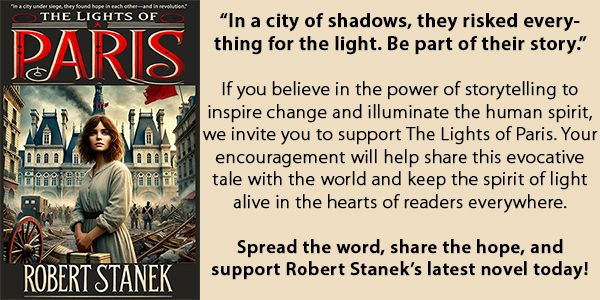
Support The Lights of Paris by Robert Stanek, William Stanek's pen name! Through vivid historical detail and deeply moving character stories, Robert takes readers on an unforgettable journey through one of history’s most transformative times.

